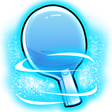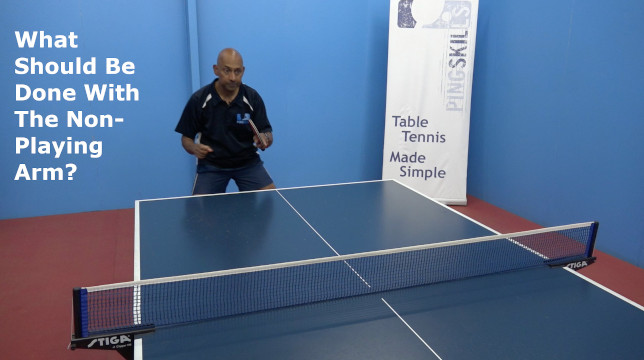FH-BH switching, feet position and rotation of hip
Strokes
p groot Asked 9 years ago
Hi guys,
I am in a dilemma...
I notice that you play both backhand and forehand from an almost square on position. If I look closely at your video's, to hit a decent backhand, you ever so slightly rotate your torso/hips to the left. That way your upper body is pointing towards the direction that you want the ball to go. To hit a forehand, you begin by strongly rotating your torso/hips to the right. With other words, you guys need little forward/backward movement of the right foot to switch between both strokes.
The problem I see however with a lot of players is that for some reason they barely rotate the hips and almost completely rely on arm movement and foot placement with the forehand stroke. I am talking about older players who are missing the flexibility and strength, about beginners, but also about very young players that are simply still missing the motoric skills to incorporate the hip rotation in their strokes. They stand square on for their backhand, when they expect a forehand they move their right foot way back (rotate to the right) to not send the ball over the left side of the table. When they ask me how they should have their feet positioned for receiving, I am unable to give them a good answer. The real problem lies in that they should start rotating their hips more, which will enable them to hit both strokes from an almost square on position, but they either can't or won't. The best I can come up with is starting from a position that lies halfway between their prefered backhand and forehand stance. It will take extra time though to play each stroke, such players are often easily outplayed when their opponent exploits this weakness, by simply varying the direction of every ball. Sooner or later the player can't keep up anymore.
Is my analysis right and what would be the best advise to give to players other than 'start rotating your hips!'. :) Is my advise of standing halfway good or are there better solutions?
hope my question makes sense,
cheers
 Alois Rosario Answered 9 years ago
Alois Rosario Answered 9 years ago
Hi,
I think the best solution is to get them to follow the ball with their bodies. One way to think of it is to always be facing the ball wherever it is. So when the ball is coming to the forehand side they will naturally follow the ball with their bodies and this will tend to get them to rotate their hips.
Take a look at the lesson on Improving Your Reflexes which also covers this idea.
Recommended Video
What Should Be Done With The Non-Playing Arm?
The Non-Playing Arm might seem to be useless, but in reality, it plays an essential part in table tennis technique.
Watch NowThoughts on this question
Become a free member to post a comment about this question.

p groot Posted 9 years ago
I like it...
It's a beautiful way to learn to apply hip rotation in a natural way.
I will try it out on some players to see if they 'get it'.
Thanks Alois
Would love to hear how it goes
p groot Posted 9 years ago
Here's my plan for this week:
1) I will start out by asking a player to stand almost square on as if he is standing behind a table for a service return.
2) I will hold a ball in front of his body and ask to follow that ball with his upper body without moving his feet.
3) I will move the ball back and forth between the backhand striking location and the forehand striking location. The player can only follow the ball with his upper body by rotating his hips. He doesn't even have to think, it should happen naturally.
4) Once that has settled, I will try the 'follow the ball with your upperbody' exercise and hope he will start seeing the benefits of integrating the hip rotation in his fh-strokes.
I suspect the real problem comes when he has to time everything correctly (rotation of hips, arm movement, point of contact). This will probably take time.
I'll let you know how it went.... :)
Great. Will be interested to hear the results.